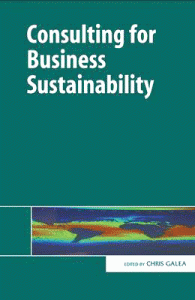
With ‘green economy’, ‘sustainability’ and ‘responsible business’ becoming the new buzzwords, there is a greater need for academic research and publication to aid consultants and business students. The compilation entitled ‘Consulting for Business Sustainability’ edited by Chris Galena is such a book that aims to provide consultants with an understanding of current trends and relevant tools in the light of research and experience based in the UK.
Of all the articles included in this compilation, perhaps the most interesting, succinct and easy to read is the introduction itself. Addressed to the consultants hoping to cash on this opportunity and trying to provide value to their client firms, Galea has developed a highly relevant and extremely easy to understand matrix: the urgency-importance matrix.
Designed to categorize issues in terms of their urgency and their importance, it helps consultants define areas of current and emerging interest for firms and thereby help them become pro-active and remain ahead of competition – the core issue for an organization that wants to be sustainable. Consultants are advised to liken their client organizations to a car and develop the ability to identify which of the ‘squeaks’ from their ‘cars’ are cosmetic and which indicate the need for an urgent trip to the car mechanic.
With the first chapter focusing on the current trends in consulting for sustainability in the UK as a whole, other articles focus on specific industries such as mining, real estate and finance and banking. Business concerns in these industries all over the world have a greater need for understanding and developing a tactical and strategic approach to sustainability since their operations involve use of finite resources and have a greater impact on the quality of life of people involved as stakeholders.
Likewise, there are articles that focus on the interrelationship between climatic concerns and human rights issues and the importance of correctly assessing environmental impact of the business. However, perhaps the most important articles are those that focus on the identification and assessment of stakeholders for any given business concern. The ‘stakeholder dashboard’ is such a tool that, though technical and tedious to develop, aims to help the business become proactive about stakeholder engagement.
For consultants, these research articles will indeed serve to improve their understanding of their own role in this dynamic and challenging field. The chapters entitled ‘Strategic Sustainability Consulting’ and ‘Supporting the Change Agents’ help build a case for sustainability and provide practical tips for consultants. Galea’s editing efforts will also benefit business and environ-mental science students since it provides many tools and formulae that will aid practical reporting and research.
Even so, the articles are often tedious to read in spite of having subtitles. It would perhaps have been better to exclude the details of research methodology and focus instead on the research findings and their impact in specific business settings. Often the diagrams are complicated and confuse rather than illuminate, such as the figure showing the connection between social impact assessment, country human rights risk analysis and mitigation. Similarly, the number of graphs and tables could have been reduced. This book, therefore, would likely be read only as part of a curriculum or research assignment.





